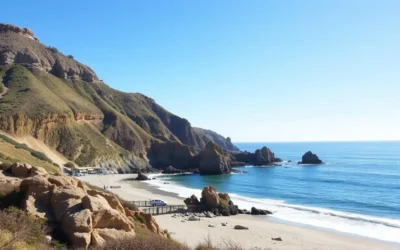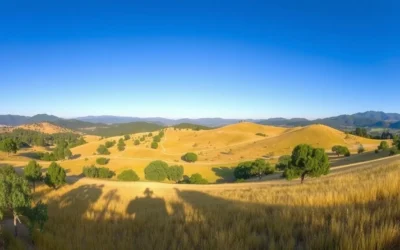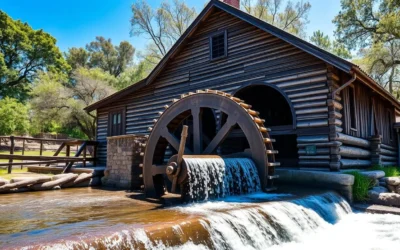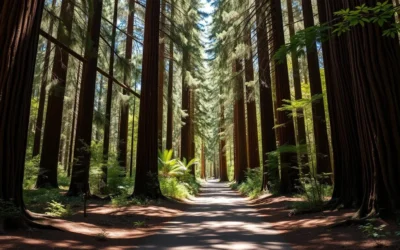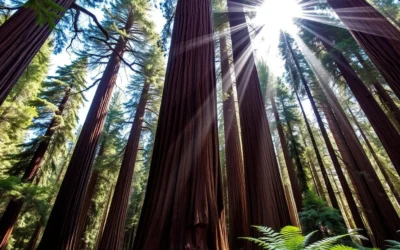✓ Accommodations✓ Flights✓ Rental Cars✓ Tours & Activities
When traveling in the United States, the weather plays a significant role in shaping your trip experience. To make the most of your journey, it’s crucial to choose the right time and destination.
The diverse climate zones and seasonal variations across the country mean that weather conditions can vary dramatically from one region to another. Whether you’re heading to a bustling city or a serene natural landscape, understanding the local weather patterns is essential for a enjoyable trip.
By considering the weather and planning accordingly, you can ensure a travel experience that’s both memorable and stress-free.
Understanding America’s Diverse Climate Zones
Spanning across nearly 3,000 miles, the United States features six distinct climate zones that create varied weather experiences. The country’s vast size and diverse landscapes contribute to dramatically different regional climates.
From Desert Heat to Alpine Chill: Regional Weather Patterns
The United States is home to a wide range of regional weather patterns. The Pacific Coast enjoys mild temperatures year-round, while the Southwest experiences scorching summers and pleasant winters. In contrast, mountain regions like the Rockies create their own microclimates, with temperatures dropping approximately 3.5°F for every 1,000 feet of elevation gain.
The Great Plains and Midwest experience extreme seasonal variations, with hot summers and frigid winters that can significantly impact your travel experience.
How Geography Shapes Your Travel Experience
Understanding how geography influences weather patterns helps you anticipate conditions in national parks and natural landscapes, allowing for better preparation and more enjoyable outdoor adventures. Coastal areas typically experience more moderate temperature fluctuations than inland regions, which is an important consideration when planning your itinerary.
By considering the geography of your destination, you can make informed decisions about your travel plans and ensure a more enjoyable trip.
Spring: Cherry Blossoms and Mild Adventures
As spring unfolds, the country’s varied regions reveal their unique charm, from blossoming flowers to gentle temperatures. This season is characterized by mild weather, making it ideal for outdoor exploration.
March to May: Temperature Ranges Across Regions
During spring, temperatures across the US range from the 50s to 70s Fahrenheit, creating perfect conditions for outdoor activities without the sweltering heat of summer. Regional variations are significant, with the Southwest warming up to the 80s, while the Northeast and Midwest may still experience occasional frost.
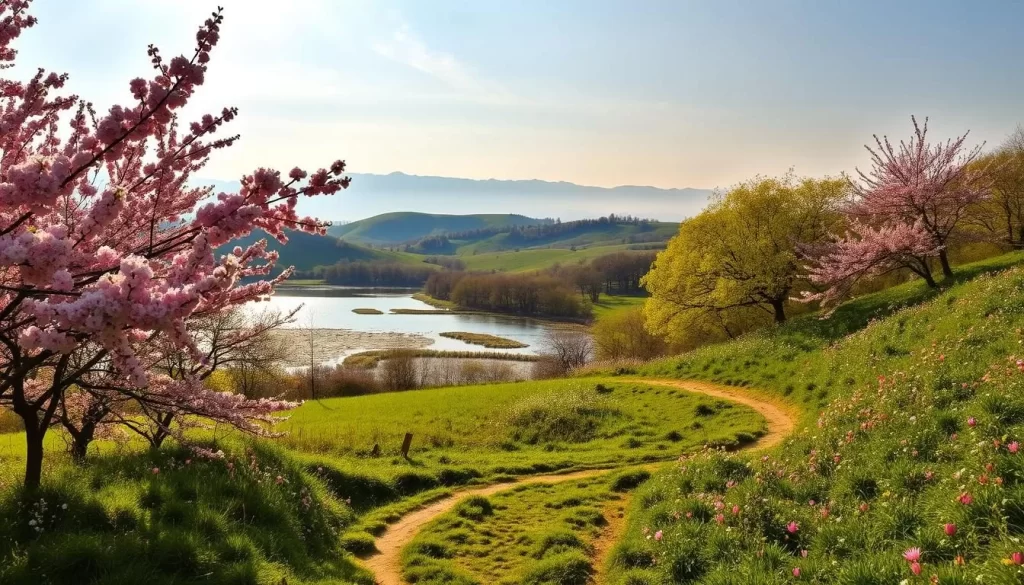
Washington D.C. and the Cherry Blossom Festival
Washington D.C. is a top destination in spring, thanks to the breathtaking Cherry Blossom Festival. The festival celebrates the blooming of over 3,000 cherry trees, a gift from Japan, creating a picturesque landscape that attracts visitors worldwide.
Spring Outdoor Activities and Natural Wonders
Spring is an excellent time for hiking and enjoying outdoor activities in places like Great Smoky Mountains National Park, Zion National Park, and Texas Hill Country. The season’s mild weather and vibrant wildflowers make it a perfect time to explore America’s natural wonders.
The shoulder season aspect of spring means fewer crowds at popular attractions, making it an ideal time for a weather-savvy trip. With pleasant temperatures and extended daylight hours, spring offers a great balance for travelers looking to enjoy the outdoors.
Summer: Navigating Heat, Humidity and Crowds
Summer in the U.S. is a season of extremes, from scorching deserts to cool mountain retreats. As temperatures soar across much of the country, travelers must navigate not only the heat but also the crowds that flock to popular destinations.
June to August: Regional Temperature Variations
During the summer months, regional temperature variations become a crucial factor in planning your trip. The Southeast and Gulf Coast regions are known for their sweltering heat, with temperatures often reaching the 90s°F and humidity levels exceeding 70%. In contrast, coastal destinations like San Diego and Seattle offer milder climates, typically 10-15 degrees cooler than inland areas.
| Region | Average High Temperature (°F) | Humidity Level |
|---|---|---|
| Southeast/Gulf Coast | 90+ | High |
| Coastal Areas (e.g., San Diego, Seattle) | 75-85 | Moderate |
| Mountain Destinations (e.g., Colorado Rockies) | 70-80 | Low |
Beat the Heat: Strategies for Summer Travel
To make the most of your summer travel, consider strategies to beat the heat. Plan your outdoor activities during the early morning or evening when temperatures are cooler. Seek out air-conditioned venues during the peak afternoon heat. Additionally, staying hydrated and wearing light, breathable clothing can significantly enhance your comfort.
Perfect Summer Destinations with Comfortable Weather
For a more comfortable summer experience, consider destinations known for their pleasant weather. The Pacific Northwest, with cities like Seattle and Portland, offers dry and clear days ideal for sightseeing. Northern Michigan and the Great Lakes region provide breezy lakefronts, while the Colorado Rockies offer hiking trails surrounded by towering mountains.
By choosing your destination wisely and planning your activities strategically, you can enjoy a fulfilling summer adventure despite the heat and crowds.
Fall: The Golden Season for US Travel
The fall season brings a kaleidoscope of colors and comfortable temperatures, making it an ideal time to travel in the US. During this period, the country transforms with the changing leaves, creating breathtaking landscapes.
September to November: Weather Patterns and Foliage
From September to November, the US experiences a gradual change in weather, with temperatures transitioning from warm to cool. This fall season is characterized by the vibrant colors of the changing foliage, particularly in the Northeast.
New England and Beyond: Fall Color Destinations
New England states like Vermont and New Hampshire are renowned for their spectacular fall foliage. Beyond New England, destinations such as New York’s Adirondacks and the Great Smoky Mountains offer equally stunning autumn displays.
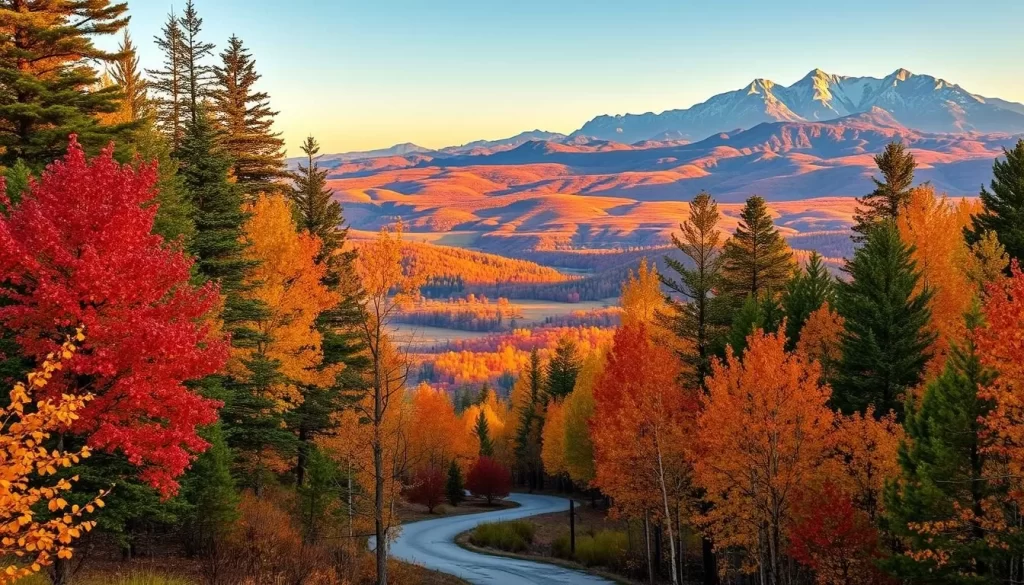
Harvest Festivals and Outdoor Adventures
Fall is not just about the foliage; it’s also a season for harvest festivals and outdoor activities. You can enjoy apple picking in various orchards, visit Napa Valley for wine tasting, or go hiking in the many national parks.
- Experience the vibrant colors and comfortable temperatures of the US during fall.
- Visit renowned destinations like New England for spectacular fall foliage.
- Enjoy harvest festivals, apple picking, and wine tasting across the country.
Winter: Snow Escapes and Sunny Retreats
As winter descends upon the United States, the country transforms into a diverse array of cold and warm destinations. You can choose your adventure based on your preference for snow or sun.
December to February: From Blizzards to Beach Days
During the winter months, the U.S. experiences a wide range of weather conditions. Temperatures vary significantly across regions, with the northern states facing winters that are harsh and cold, while the southern states enjoy milder weather.
Winter Wonderlands: Mountain and Northern Destinations
For those who enjoy snow and winter sports, destinations like Colorado and Utah offer world-class skiing and snowboarding. You can enjoy hiking in the snow or engage in other winter activities in a beautiful place like Aspen or Park City.
Warm Winter Getaways in the South and Southwest
If you prefer warmer weather, head to places like Miami, Key West, or Arizona. These locations offer a sunny escape from the cold, with activities like hiking and golf available during the winter months.
United States: Best Months for a Weather-Savvy Trip by Region
When planning a trip to the United States, understanding the best time to visit different regions can greatly enhance your travel experience. The country’s diverse climate zones mean that the ideal travel time varies significantly from one region to another.
West Coast: California, Oregon, and Washington
The West Coast is known for its mild climate year-round, making it an attractive destination for travelers. September and October are particularly pleasant, with warm temperatures and fewer crowds. You can enjoy perfect beach weather in Southern California while exploring the wine harvests in Napa and Sonoma.
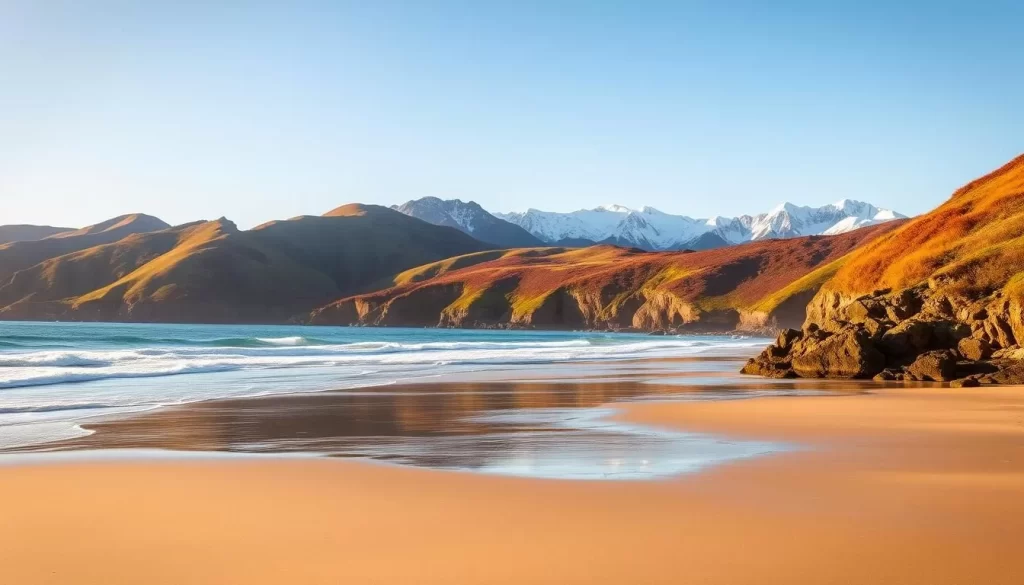
Southwest: Arizona, New Mexico, and Utah
The Southwest is ideal to visit during spring (March-May) and fall (September-November). These periods offer moderate temperatures, making it perfect for exploring the region’s spectacular national parks and desert landscapes. Summer temperatures often exceed 100°F, making outdoor activities challenging.
Midwest and Great Lakes Region
The Midwest shines during summer and early fall, with pleasant temperatures from June to September. This period is ideal for enjoying lakeshores, forests, and outdoor festivals. The region is also stunning in autumn, with harvested crops and changing foliage.
| Region | Best Time to Visit | Weather Highlights |
|---|---|---|
| West Coast | September, October | Mild temperatures, fewer crowds |
| Southwest | Spring (March-May), Fall (September-November) | Moderate temperatures, ideal for national parks |
| Midwest and Great Lakes | Summer, Early Fall (June-September) | Pleasant temperatures, outdoor festivals |
Top 10 US Destinations with Year-Round Pleasant Weather
If you’re looking for a US destination with pleasant weather year-round, you’re in luck because there are several fantastic options to choose from. The US is a vast country with diverse climate zones, but some cities stand out for their consistently comfortable temperatures and sunny days.
San Diego, Honolulu and Santa Barbara
San Diego, California, is renowned for its near-perfect Mediterranean climate, with average temperatures ranging between 65-75°F year-round and 266 sunny days annually. Honolulu, Hawaii, offers consistent tropical warmth, with temperatures typically between 70-85°F throughout the year. Santa Barbara, California, combines a Mediterranean climate with cooling ocean breezes, maintaining comfortable conditions year-round with average temperatures between 60-75°F.
Charleston, Flagstaff and Monterey
Charleston, South Carolina, provides pleasant weather for much of the year, with mild winters and warm but manageable summers thanks to cooling ocean breezes. Flagstaff, Arizona, offers a unique high-desert climate with four distinct seasons and cool summer temperatures averaging 80°F. Monterey, California, maintains consistently mild temperatures between 55-70°F year-round due to its coastal location.
Sarasota, Boulder and Other Weather-Friendly Spots
Sarasota, Florida, combines warm Gulf waters with pleasant winter temperatures and manageable humidity, making it appealing during winter months. Boulder, Colorado, boasts over 300 sunny days per year with relatively mild winters and comfortable summer temperatures moderated by its elevation. Other weather-friendly spots include cities that offer a mix of natural beauty and comfortable climates, making them ideal for year-round visits.
| City | Average Temperature Range (°F) | Sunny Days Annually |
|---|---|---|
| San Diego, CA | 65-75 | 266 |
| Honolulu, HI | 70-85 | 300+ |
| Santa Barbara, CA | 60-75 | 300+ |
| Charleston, SC | 50-80 | 215 |
| Flagstaff, AZ | 40-80 | 230 |
Weather Challenges: Indoor Attractions and Backup Plans
Whether you’re exploring the city or enjoying outdoor activities, having a plan for bad weather can make or break your trip. The United States is a vast country with diverse climate zones, and being prepared for unexpected weather conditions is crucial.
Rainy Day Alternatives in Major Cities
When the rain comes, major cities like Washington, DC, offer exceptional indoor alternatives. The Smithsonian museums, including the National Air and Space Museum and the National Museum of American History, are free and open every day but Christmas, providing days of exploration.

Dealing with Extreme Weather Events
Extreme weather events like hurricanes, blizzards, and wildfires require flexible planning. Being aware of seasonal risks and having backup plans can save your trip. Consider visiting indoor water parks or entertainment complexes like Great Wolf Lodge for a fun-filled adventure.
Museum Circuits and Indoor Entertainment Options
Many city museums are connected by indoor walkway systems, making it easy to navigate between attractions on rainy days. You can maximize your time by organizing thematic museum circuits, exploring things to see and do while staying dry.
Strategic Travel Planning Around Weather
To make the most of your travel, it’s essential to plan strategically around the weather. This involves understanding the climate patterns of your destination and adjusting your plans accordingly.
Packing Essentials for Different Seasons and Regions
Packing for US travel requires a layered approach, especially when visiting regions with significant temperature fluctuations. You should consider the season and region you’re traveling to and pack accordingly. For instance, layers are key for places with varying day and night temperatures.
Shoulder Seasons: The Sweet Spot for Weather and Crowds
Traveling during the shoulder seasons (typically April-May and September-October) can be beneficial. You can enjoy favorable weather with fewer crowds and lower prices. This makes for a more comfortable and cost-effective trip.
- Enjoy favorable weather conditions
- Avoid large crowds
- Benefit from lower prices
Weather Apps and Resources for Trip Planning
Utilizing weather apps and resources like the National Weather Service, Weather Underground, and AccuWeather can help you plan your trip effectively. These platforms provide historical weather data to determine the optimal timing for your trip based on temperature, precipitation, and extreme weather patterns.
By planning your daily activities around typical weather patterns and being flexible with your itinerary, you can maximize your travel experience. Consider buffer days for unexpected weather changes and have backup plans ready.
Conclusion: Creating Your Perfect Weather-Based US Itinerary
Crafting your perfect US itinerary involves aligning your travel goals with the country’s diverse seasonal offerings. The United States offers a wide range of climates and geographical features, ensuring that there’s something for every kind of traveler, regardless of when you visit.
To make the most of your trip, consider the season and weather conditions that suit your preferences. Spring and fall generally provide the most comfortable conditions across most of the country, making them ideal for outdoor activities and city explorations. For instance, visiting Washington D.C. in the spring to witness the cherry blossoms or exploring New York City and New England in the fall for the foliage can be particularly rewarding.
When planning, keep in mind that national parks are best visited during the shoulder season (April-May and September-October) to avoid crowds while enjoying comfortable weather. Meanwhile, summer is ideal for northern states and mountain destinations, while winters offer opportunities for both snow sports and sunny getaways.
By balancing your travel preferences with the regional climate patterns and considering the various events and festivals throughout the year, you can create a trip that meets your expectations. Whether you’re looking for adventure or relaxation, the US has the best time for you to visit.
The above is subject to change.
Check back often to TRAVEL.COM for the latest travel tips and deals.

